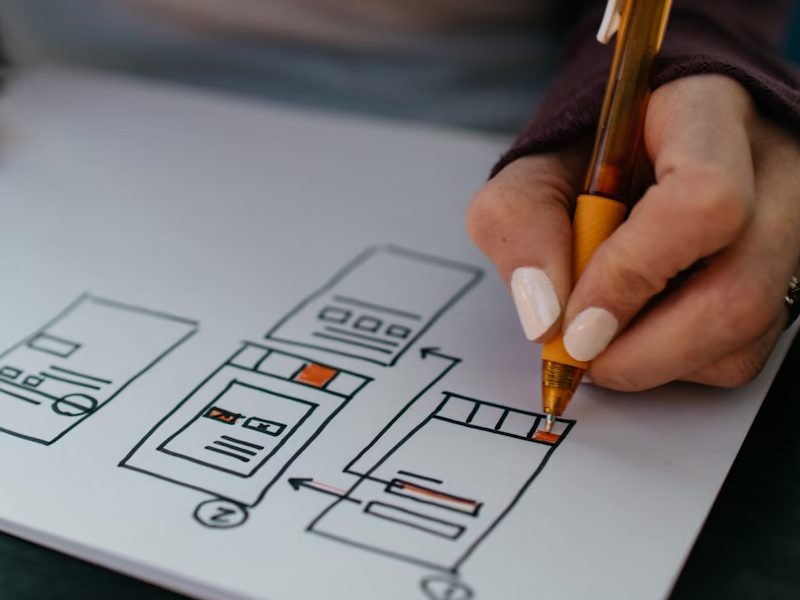There are many things we, as UI/UX designers, consider when we are designing an app or a website. We spend a lot of time making them as user-friendly as possible while also making them look good. All while also keeping our managers happy. And especially within budget!
And often, it is easy to miss out on important details about UI/UX design. Maybe we misunderstand the platform’s vision. Or maybe we rush and make small mistakes – mistakes that take weeks to redo. Or maybe it simply might be that we don’t know how or where to start. All of these lead to postponing the platform’s launch date. And no one wants that.
But UI/UX design has evolved. And so has the way we design. More and more UI/UX designers are adopting design systems in their design process. Design systems have become such an essential part of my everyday work. And, well, from what I’ve seen around me, this is the case for other designers as well. In fact, in 2020, Forrester discovered that 65% of the companies surveyed used a design system for their apps.
In today’s article, we will focus on what design systems are, why design systems are important, and the benefits of design systems while also looking at some of the design system examples.
What Is a Design System?
Before explaining what is a design system, let’s start with what is not a design system. It’s not a Pattern Library, nor is it a Style Guide – or a Figma Library. Yes, it’s a combination of all of these. But it’s much more than that.
Design systems are a collection of resources that can be used and reused across multiple designs. In other words, a design system can include components – such as icons, toggles, dividers, banners, and so on, variables and styles that can be changed according to your needs, and even documentation that can help you in your design process.
For example, our uinkits design system includes variables, a component library, a pattern library, and visual elements, including colors and icons. Each part of the design system provides documentation for using a certain component and why. But the uinkits design system doesn’t just provide you with a banner, for example. Instead, it explains when it’s best to use this banner and what you might want to add.
Without this documentation, it’s simply a library of elements and code snippets that we can easily add or remove. But a design system doesn’t just stop at just physical components. What makes a design system is precisely the components AND the guidelines of how to use them – and why.
Who Can Use A Design System?
Well, pretty much everyone. The purpose of a great design system is that it can be adopted by everyone – not just UI/UX design experts. Stakeholders, content creators, salespeople – all people in our company. Because of how it’s created, it allows all of us to access the designs and be part of the design process – even if we’re not designers. With a design system, everyone is a designer.
And that’s not all! Since a design system also includes code snippets and other directions on code, it can also be used by developers and engineers in the development process.
40% OFF
Only this December
Upgrade to UI PRO version of Uinkits Systems to unlock 23.000 UI components.
Use the code "DEC40"
The Importance of a Design System
Yes, a design system can be pretty costly. But the reality is that when implemented well, the benefits outweigh the costs. And in the end, you will realize that you would have spent much more without a design system. So, why exactly is that? Why should I use a design system?
Designing (and developing) an app or a website takes time. And time is money. But because we can easily use the pre-made and ready-to-use UI components, it means that we, as UI/UX designers, don’t have to start from scratch each time. We can simply update components across our design with a few changes according to our needs, and we’re good to go.
What would have taken us 5 hours to create takes us 15 minutes (and a lot less stress). The time that was once dedicated to designing a single project can now be spent in designing not just one but five projects.
“Employees spend 1.8 hours every day searching for and acquiring information.”
According to this McKinsey report, for a 5-day work week, 9 hours are spent simply searching for and gathering information. This means that if we work for a week, then in 4 days, we put in the actual work, while a day is spent searching for answers, but you don’t contribute anything.
But with a design system, we automatically eliminate this dead time. Creating a component takes time – not only for designing but also for research and feedback. However, clearer guidelines mean less research and fewer rounds of feedback, which means fewer revisions. With a design system, it also means fewer risks of error.
We already established that it allows us to focus on more significant problems. However, since design systems allow everyone to participate in the design process, we can delegate specific tasks even to those who are not experts. So, we don’t need to pay a senior UI/UX designer a bunch of money. We can do everything faster, with fewer resources, and more efficiently! In this situation, we do more with less!
When multiple people are working on a project, it might be quite challenging to deliver a consistent brand experience. As UI/UX designers, we have different styles and different preferences. However, a design system can cover those details that we often overlook when designing individual components. But they become extremely obvious when looking at the whole design.
This is all about eliminating manual adjustments. Now, you don’t have to worry about manually updating each font or color across the entire design manually. The design system will do that for you. This way, every component adheres to the same style, creating a cohesive brand experience.
A design system is a shared language for everyone on our team. It creates a shared vocabulary for all designers (and others who participate in the design process) to collaborate and communicate efficiently. No more guesswork, no more lost-in-translation moments, no more misunderstood emails. Everyone is on the same page, and everyone is working towards the same goal without letting frustration fester.
Plus, let’s not forget about how beneficial it becomes when it comes to training new employees or teaching junior-level designers. With clear guidelines and documentation, the design system is a comprehensive roadmap.
How Much Time Can We Actually Save By Using Design Systems?
In 2019, Figma carried out an exciting experiment on different designers. This showed that designers who used a design system completed their work 34% faster than the ones who did not use one.
But that’s not only from a design point of view. We can also look at it from a tech perspective. According to a study published by ZeroHeight, design systems can save up to 37% of development time. That is quite a lot of time saved up just by adopting a design system for your app!
Design System Elements
- Component Library
A component library is also known as a UI Kit. As the name suggests, it includes user interface components that can be reused in other designs. These components have been previously designed and can be easily customized in various future projects. A good design library includes all the components necessary to build a platform from scratch.
The main components of a design system are: tabs, tags, forms, radio buttons, buttons, dividers, dropdown menus, drawers, banners, progress indicators, toggles, tooltips, charts, and cards.
- Style Guide and Variables
The style represents our company’s branding. The colors we use, the fonts and the sizes, the logo placements, and everything else that governs our company’s look and feel. But how does it work in a design system?
Well, let’s say the primary color you have chosen for your style doesn’t fit in with the rest of the design, so you decide to change the color to a more suitable one. But you don’t have to worry about updating the color in every section. With a design system, the color you have chosen for your style will automatically be applied to the whole design.
- Pattern Library
Think of components as puzzle pieces that combine in specific combinations to provide both an intuitive user interface and a consistent user experience. These combinations are what we call patterns – innovative and standardized solutions to recurring design problems.
Think about the Hero Banner. With a design system, you don’t have to redesign it whenever you want to include a Hero Banner. You already have a set of rules for this element – the dimensions, the placement of text, and the call-to-action button.
- Documentation
What makes a design system is the implementation of documentation – or guidelines. Yes, design systems can help us speed up the process by using pre-designed components in our designs. But in a design system, we’ll find explanations for every design decision. It's all right there, from the color palette to the padding of a button to the component choices. It’s not just a “do’s” and “don’t” list. The “whys” and the “hows” make our UI/UX designs good.
uinkits – Our Figma Design System and UI Kits
We at uinkits understand the importance of inputs in great user experiences and creating amazing UI designs. That’s why we’ve developed a Figma UI Kit with design components that include these essential UI elements that enable you to design intuitive and user-friendly interfaces effortlessly.
“You press the button, we do the rest.” – Kodak.
Inspired by this iconic tagline from Kodak, we believe in simplifying the design process for you. Our Figma UI Kit, uinkits, is a complete design system with UI components that allows you, as a UI UX designer, to create your products as quickly as pressing a button.
Our design system includes UI components, icons, variables, cards, buttons and everything you need for your design process. All you have to do is take your UI design component needed, and you’re ready to use it in your designs!
By
Gabriel Pana
•
August 5, 2023

.webp)






